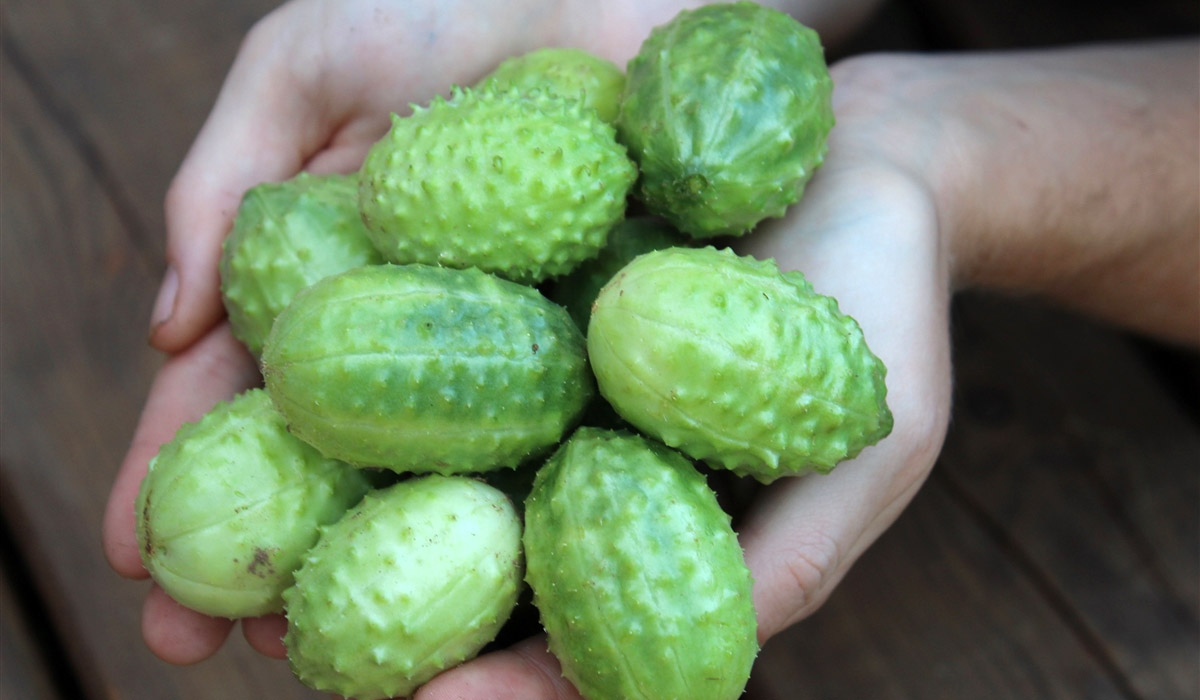
Ever heard of the West Indian Gherkin? This quirky cucumber cousin packs a punch in both flavor and history. Native to Africa but now grown in the Caribbean and the Americas, this spiky little fruit is more than just a pickle ingredient. Did you know it’s also called the bur gherkin or maroon cucumber? Farmers love it for its resilience to pests and diseases. Plus, it’s a nutritional powerhouse, loaded with vitamins and antioxidants. Whether you’re a gardener, a chef, or just a curious eater, the West Indian Gherkin offers something unique and tasty. Ready to learn more? Let's dive in!
Key Takeaways:
- The West Indian Gherkin is a spiky, small vegetable with a slightly bitter taste, perfect for pickling and adding flavor to Caribbean dishes. It's easy to grow and packed with vitamins A and C for a healthy diet.
- With a rich history and medicinal uses, the West Indian Gherkin is a versatile ingredient in the kitchen. It's low in calories, high in nutrients, and adds a unique crunch to salads and sandwiches.
What is the West Indian Gherkin?
The West Indian Gherkin, also known as the burr gherkin or West Indian gourd, is a unique and fascinating plant. It belongs to the cucumber family and is known for its spiky, oval-shaped fruits. Here are some intriguing facts about this lesser-known vegetable.
-
The West Indian Gherkin is native to Africa but has been widely cultivated in the Caribbean and the Americas.
-
This plant thrives in warm climates and is often grown in tropical and subtropical regions.
-
The fruits are small, typically about 1-3 inches long, and covered in tiny spines.
-
Unlike regular cucumbers, West Indian Gherkins have a slightly bitter taste, making them ideal for pickling.
Historical Significance
The West Indian Gherkin has a rich history that dates back centuries. It has been used in various cultures for its culinary and medicinal properties.
-
Indigenous peoples in Africa and the Caribbean have used this plant for centuries in traditional medicine.
-
During the colonial era, European settlers brought the West Indian Gherkin to the Americas, where it became a popular crop.
-
In some cultures, the gherkin was believed to have healing properties and was used to treat ailments like digestive issues and skin conditions.
Culinary Uses
The West Indian Gherkin is a versatile ingredient in the kitchen. Its unique flavor and texture make it a favorite in many dishes.
-
It is commonly used in pickling recipes due to its firm texture and tangy taste.
-
In Caribbean cuisine, the gherkin is often added to stews and soups for extra flavor.
-
Some chefs use it as a garnish for salads and sandwiches, adding a crunchy element to the dish.
Growing and Harvesting
Growing West Indian Gherkins can be a rewarding experience for gardeners. They are relatively easy to cultivate and can produce a bountiful harvest.
-
These plants prefer well-drained soil and plenty of sunlight to thrive.
-
They can be grown from seeds, which should be planted in warm soil after the last frost.
-
The gherkins are typically ready to harvest about 60-70 days after planting.
Nutritional Benefits
The West Indian Gherkin is not only tasty but also packed with nutrients. Including it in your diet can offer several health benefits.
The Final Bite
West Indian gherkins are more than just a crunchy addition to salads. These small, spiky cucumbers pack a punch with their nutritional benefits and unique flavor. They’re rich in vitamins A and C, fiber, and antioxidants, making them a healthy choice for any diet. Plus, their versatility in recipes—from pickles to stews—means you can enjoy them in many ways.
Growing them in your garden is a rewarding experience. They thrive in warm climates and require minimal care. Just give them plenty of sunlight and water, and you'll have a bountiful harvest.
Whether you’re a seasoned gardener or a curious foodie, adding West Indian gherkins to your repertoire is a smart move. They’re not just good for you; they’re also a fun and tasty way to mix up your meals. Give them a try and see for yourself!
Frequently Asked Questions
Was this page helpful?
Our commitment to delivering trustworthy and engaging content is at the heart of what we do. Each fact on our site is contributed by real users like you, bringing a wealth of diverse insights and information. To ensure the highest standards of accuracy and reliability, our dedicated editors meticulously review each submission. This process guarantees that the facts we share are not only fascinating but also credible. Trust in our commitment to quality and authenticity as you explore and learn with us.


